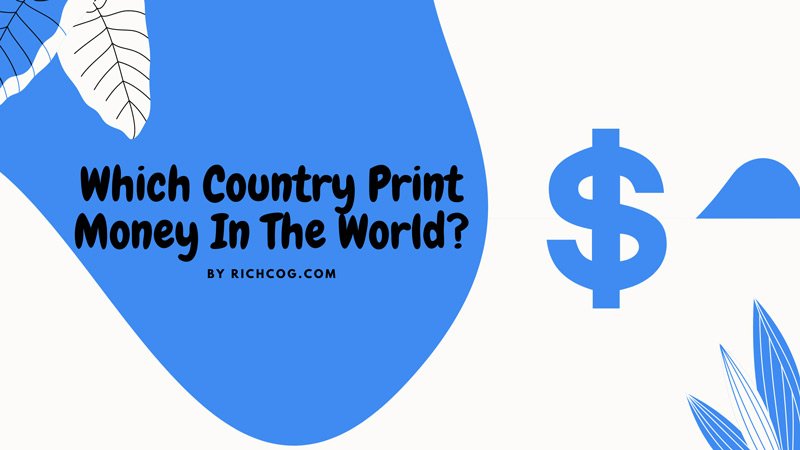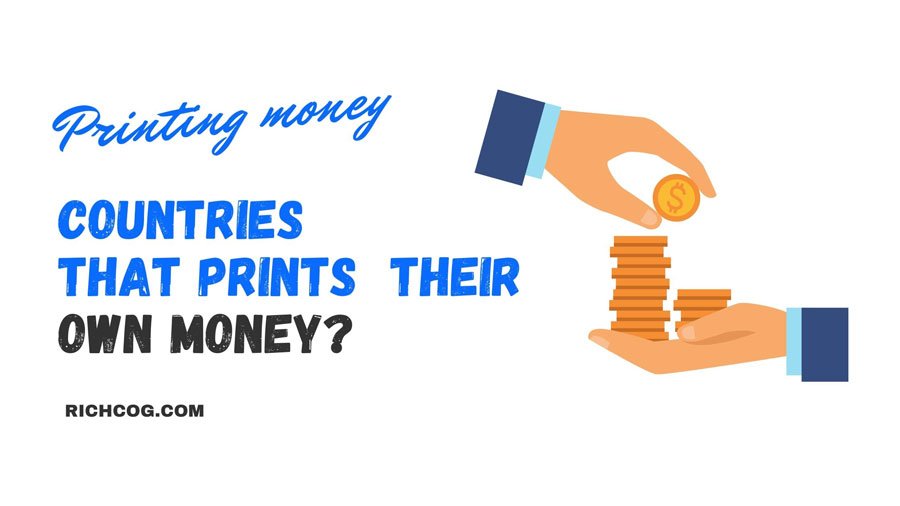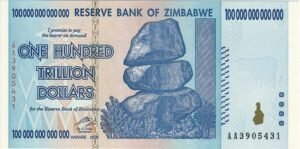Disclaimer: The information you'll get on this article is well researched, but we still don't recommend you to directly relay on, what information we're providing to the readers. Because these pieces of information don't share by the highest authorities on the purpose of security concerns.
If you are ever wondered which country print money in the world? & where is money printed in the world? don’t worry, we are here to give you all the details with the help of the highest authorities.
We all are normal people so there is a good chance that we thought about this one question, which country print money in the world? can we print more and more and get rich quickly?
The explanation is very simple: Every nations prints their own money except those who has adopted the currency of another country.
But the answer is not as simple as it sounds.
As far as the data is collected, There are 11 countries that use the US dollar which means they have no longer their own currency.
The 12 European countries were replaced with the Euro. and the rest of the remaining countries, which are 175 nations have their own currency like CAD, JPY, SGD, CHF, AUD, GBP, INR, NPR, and more.
Even though 175 countries have their own currency, most countries don’t print their own money, which makes you wonder, what’s going on, and why they are not printing their own money.
Well, maybe they don’t have the required expertise or it’s just IMF regulations.
Before I jump into the where is money printed in the world?
Let’s check out the actual physical process of printing money in order to take advantage of beneficial circulation in the nation:
- Easy access
- Cost-efficiency of mass production,
- Special paper
- Fast cash
- Security features
- Quick circulation
- Quality control
But most countries use one of the third-party printers, or the treasury department of a major country, under the contract and they will print the money for the specific nation under the deal.
We’ll go through that, just in a second.
Most countries prefer outside printing because it’s expensive and difficult to print your own money in your country itself. There are a bunch of companies De La Rue that is involved in printing money.
It has existed for a few hundred years so they are more mature and have good technology and has developed credibility on security.
That’s why if you are a smaller country unlike the US, China, or India who can afford these things in their country itself.
It makes a lot of sense to outsource production. because it’s not going to be worth purchasing expensive technology if you only need a small number of notes.
Where is money printed in the world?
The right question is: Which are the countries that print money?
It's something like asking where is money made in the world?
The answer is there are a bunch of countries that print their own money, except those who adopted the currency of another country.
So, How many countries print their own money? Well, there are 11 countries that have adopted the US dollar and no longer have their own currency.
The 12 European countries were replaced with the Euro which is also a very popular currency. The remaining 175 countries have their own currency.
Now, You might be thinking does every country print their own money?
No, they don't.
they have their own currency but they rely on other countries to print their money because they can't afford to print their money.
All the process of printing money is done only in one of 7 countries with sufficient printing presses which provide currency for other countries as well: Like US, Canada, Sweden, Great Britain, China, Germany, and India.
There are other countries which print their own money that we will talk about later in this blog.

Who prints money in the world?
Some countries, like India, do manufacture all their cash in the country itself. The US is also legally obliged to print its banknotes within its regions.
But a lot of countries except the 7 which I mentioned above print their money abroad, while others like Liberia don’t even have their own mint.
There are good amount companies out there that are highly specialized companies that make cash for most of the world’s currencies. Like one of the companies, De La Rue estimates the commercial print market makes up 11% of all banknotes produced.
The largest banknote producers are mostly in Europe and North America.
British company De La Rue produces cash for about 140 central banks. Every week it produces enough notes that if stacked up would reach the peak of Everest twice.
Its competitor, German company Giesecke & Devrient produces notes for roughly 100 central banks, while the Canadian Banknote Company and the US and Sweden-based Crane are also major players.
Although it’s a big business, it’s a somewhat secretive business too.
Article Source: Why countries print money outside their borders
List of countries that print their own money till now!
There are very few nations that print their own money and the rest of the other countries, who want to print money, those counties just have to contact those nations to print money for them.
As far we found the data on the internet and other sources, It's a bit difficult to say everything is perfect and 100% accurate but you will get the best possible answer to this question.

It is believed that only a few countries print their own money exclusively which is happed on the country itself.
It takes high technology and specialist to do it, that’s why most nations don’t print their own money.
List of countries that print their own money:
- United States
- China
- India
- United Kingdom
- Japan
- Russia
- Canada
- Switzerland
- Mexico
- France
- Germany
- UAE
- Sweden
More than that:
- Algeria, Argentina, Australia, Austria, Bangladesh, Belgium, Brazil, Bulgaria, Bulgaria, Chile, Colombia, Cuba, Czech Republic, DR Congo, Denmark, Egypt, Greece, Hong Kong, Hungary, Indonesia, Iran, Ireland, Italy, Kazakhstan, Kenya, Laos, Malta, Morocco, Myanmar, Netherlands, Nigeria, Pakistan, Philippines, Poland, Portugal, Romania, Serbia, South Africa, South Korea, Spain, Sri Lanka, Sudan, Thailand, Taiwan, Turkey, Ukraine, Uzbekistan, Venezuela, Vietnam, Zimbabwe.
Source: List of banknote printers
Who prints the most money?
If we listen to the Federal Reserve, we will find that there is more than $2 trillion worth of Federal Reserve notes in circulation all over the world.
Which is quite a massive amount of money right!!
But there is no exact data available to this answer because firstly companies don't share this type of information with other authorities for security concerns, but as far we know the De La Rue and BEP has one of the largest currency printing operations in the world.
Which country is printing the most money?
There is a lot of different data available on the internet but as far we know Zimbabwe printed the most money because of hyperinflation.
At that time Zimbabwe's peak month of inflation is estimated at 79.6 billion percent month-on-month, 89.7 sextillion percent year-on-year in mid-November 2008 whereas the normal inflate increase rate is 2% per year.
Now imagine how much money they have printed over the years.
In February 2007 and during the height of inflation from 2008 to 2009, Zimbabwe banknotes ranging from 10 dollars to 100 billion dollars were printed within a one-year period.
The magnitude of the currency scalars signifies the extent of hyperinflation.

⇑⇑ The largest denomination of a Zimbabwean banknote (Z$100,000,000,000,000) - source Wikipedia.
There are many trillion bills floating around the world currently but only one stands out from the rest with its unique features. The 100 trillion Zimbabwe note is the only printed genuine issued by a central banknote in the world that has 'Trillion' in its denomination.
Here are some interesting facts about that trillion-dollar:
- It is printed in dollars unlike other types of hyperinflation money
- The amount is not only written as "One Hundred Trillion" it also contains the numbers of 100,000,000,000,000 on the actual note
- It is written in English and not in German or Serbian like other hyperinflation money
- The front contains balancing rocks from harare, a cow on the right, and the zimbabwe bird
- In the backside "the smoke that thunders" waterfall, Victoria Falls, and a cape buffalo
Do african countries that print their own money ?
They can, but who would accept it? Would you? The problem is acceptance. The USA has no problem with acceptance because its economy is strong.
All US debt is in US dollars as everybody agrees to do it that way.
Note MMT says countries can buy all their debts in their own currency, but MMT also says they must have the resources to support that stand. It is not a Free for All.
The license to print money[a misleading term] is entirely based on the good standing that a nation enjoys in the world; Zimbabwe, Weimar Germany, Hungary in 1949, and Venezuela today[a special case of deliberate interference in a nation’s affairs] all were downgraded to junk status.
So First, get your economy in order and fix up your debts in an accepted currency. It's a long road but essential dealing.
Which African countries print their own money?
In South Africa, they have a mint and a reserve bank for printing money.
If you mean why can't African countries print more to escape poverty then that wouldn't work as they would be too much money in circulation and not enough things to buy which would cause inflation.
That's the main reason most African countries don't print their own money.
Why printing more money is bad?
When money is printed and more importantly when you produce more money than usual, consumers have more money and they are able to demand more goods and thus prices rise and create a massive impact on inflation rates.
So theoretically, when a country prints too many notes than it should, inflation can occur and the currency may lose its value though you can't buy the same thing with the same amount of money that was possible yesterday because of the inflation.
Recent Posts
- Some Of The Best Melin Hat Alternatives That You Can Buy TODAY…
- 10 Best way to use ATM in Europe | Important Tips for Everyone
- 9 Money Rules Your Parents Should Have Taught You
- Branded Bills vs Melin Hats Comparison – Which is best?
- Melin vs Mission Hats Comparison – $25.00 vs $59.99?
- Why do Warren Buffett, Steve Jobs & Bill Gates live simply but as multi-billionaires?
- How did Sara Blakely become the youngest female self-made Billionaire?
